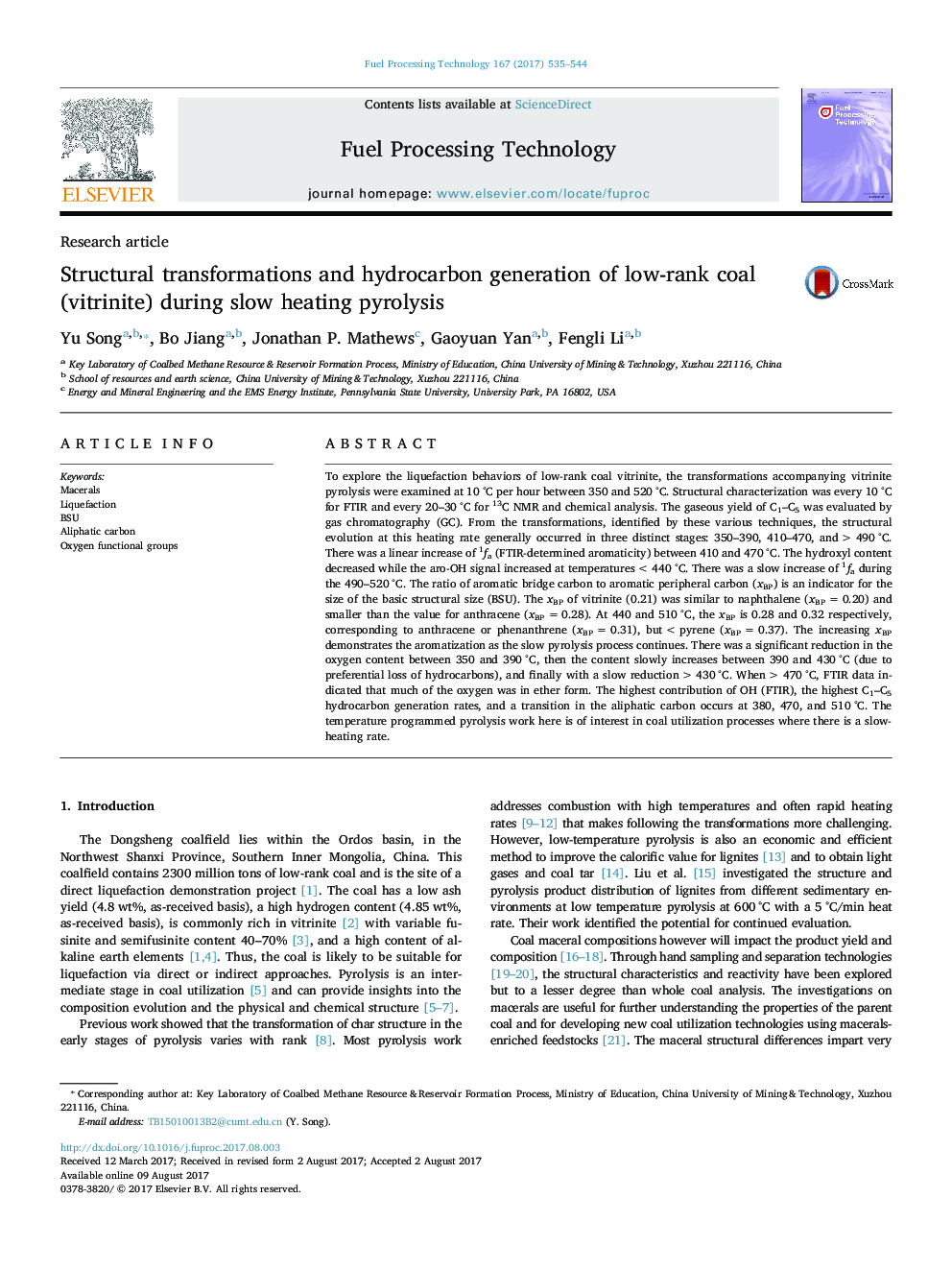| کد مقاله | کد نشریه | سال انتشار | مقاله انگلیسی | نسخه تمام متن |
|---|---|---|---|---|
| 6476346 | 1425379 | 2017 | 10 صفحه PDF | دانلود رایگان |

- The multip approaches were utilized to reveal the structural transformations of coal vitrinite during slow pyrolysis (10 °C/h).
- The couple mechanism between gas generation and structural evolution was investigated.
- The slow pyrolysis mechanism was investigated by 13 NMR, FTIR, and chemical methods.
To explore the liquefaction behaviors of low-rank coal vitrinite, the transformations accompanying vitrinite pyrolysis were examined at 10 °C per hour between 350 and 520 °C. Structural characterization was every 10 °C for FTIR and every 20-30 °C for 13C NMR and chemical analysis. The gaseous yield of C1-C5 was evaluated by gas chromatography (GC). From the transformations, identified by these various techniques, the structural evolution at this heating rate generally occurred in three distinct stages: 350-390, 410-470, and > 490 °C. There was a linear increase of 1fa (FTIR-determined aromaticity) between 410 and 470 °C. The hydroxyl content decreased while the aro-OH signal increased at temperatures < 440 °C. There was a slow increase of 1fa during the 490-520 °C. The ratio of aromatic bridge carbon to aromatic peripheral carbon (xBP) is an indicator for the size of the basic structural size (BSU). The xBP of vitrinite (0.21) was similar to naphthalene (xBP = 0.20) and smaller than the value for anthracene (xBP = 0.28). At 440 and 510 °C, the xBP is 0.28 and 0.32 respectively, corresponding to anthracene or phenanthrene (xBP = 0.31), but < pyrene (xBP = 0.37). The increasing xBP demonstrates the aromatization as the slow pyrolysis process continues. There was a significant reduction in the oxygen content between 350 and 390 °C, then the content slowly increases between 390 and 430 °C (due to preferential loss of hydrocarbons), and finally with a slow reduction > 430 °C. When > 470 °C, FTIR data indicated that much of the oxygen was in ether form. The highest contribution of OH (FTIR), the highest C1-C5 hydrocarbon generation rates, and a transition in the aliphatic carbon occurs at 380, 470, and 510 °C. The temperature programmed pyrolysis work here is of interest in coal utilization processes where there is a slow-heating rate.
Journal: Fuel Processing Technology - Volume 167, 1 December 2017, Pages 535-544